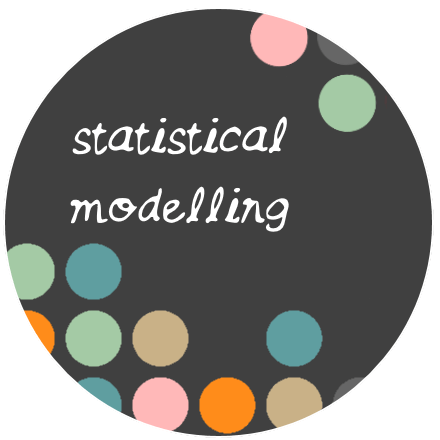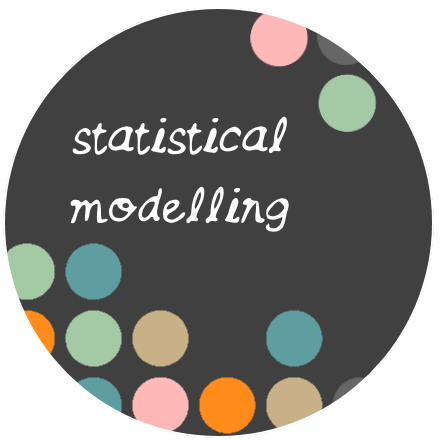Developing engaging statistical modelling activities: Where do you start?

This post provides the notes for a workshop I ran recently for the Auckland Mathematical Association (AMA) on developing statistics lessons that will engage students and promote statistical thinking. The workshop involved looking at some examples of the peer-reviewed lesson plans available from STEW (STatistics Education Web https://www.amstat.org/education/stew/) and discussing how to adapt these to the New Zealand Curriculum. We also reviewed a well-designed statistical model eliciting activity in order to identify features of high quality statistics lessons. We didn’t quite get to apply these features to co-construct a new statistical modelling activity based around the question “Can you determine someone’s gender based on their writing?” but I will include some ideas for this in part two of this post.
Show me the resources!
Designing effective statistics learning activities (including online tasks) requires the use of contexts and situations that will engage students. Great ideas for activities are all around us, and can vary in inception from interesting news articles we read to everyday events or conversations that surprise us. However, it is not just about having a great hook for learning task, we also need to pay attention to the statistical thinking we are promoting through the learning activity. How do you turn these awesome ideas into effective and meaningful lessons?
It can be difficult if you are new to teaching statistics to be able to separate the good from the bad in terms of assessing how well other people’s resources allow for the building and integrating of both statistical and contextual knowledge. Often we are motivated by time pressures and ease of use when we select teaching resources. Ideally teaching resources that are shared would include notes to help other teachers about the kinds of questions to ask students, possible misconceptions, the kinds of things we want to see students doing and how to help students with misunderstandings. These notes of course take time to write up……. hence why I have not shared very much yet on this site!
Fortunately, there are places where you can find really good teaching resources which you can use to inform and guide your teaching. You can then use these well-designed lessons as the basis for your own activity, modifying and adjusting where necessary to meet the needs of your students. It’s easier to do this when the resources explain the thinking for teachers and for students, so you can see which aspects of the activity are “non-negotiable” and which aspects can be changed. However, you should be prepared to do some thinking yourself – I haven’t yet found a teaching resource that I can use in the classroom exactly how it is when I’ve found it. I see this as a positive thing though (having to think!), because through critically reviewing resources I have developed a greater confidence for teaching statistics.
In particular, I have learned a lot from the lessons plans developed and shared by others through Census at School (NZ) and through workshops or conferences. For example, these resources developed by Joanne Woodward were written a number of years ago, and while there may be some areas of the curriculum where the focus has changed, the teacher instructions that accompany the student worksheets still contain excellent advice (particularly in terms of structure and teaching strategies). These resources are so good, you’ll find some lessons on STEW that are based on her lesson plans (e.g. Bear hugs).
Let’s STEW on this ….
Another great place to find teaching resources is STEW (Statistics Education Web). This is site set-up and maintained by the American Statistical Association (ASA) and each lesson plan is peer-reviewed by an editorial board. You’ll find similar planning templates are used for each of the lessons and a huge variety of contexts and ideas covered across the plans. These lesson plans are based on the US curriculum/standards so there are some differences in content and approaches, and the levels used may not match exactly to NZ curriculum levels or NCEA achievement standards. For example, this lesson plan about text messaging covers great ideas about bivariate data and fitting linear regression models, but unlike what we do in NZ, extends the statistical knowledge covered into sample-to-population inference for the regression coefficients and the correlation coefficient, which is not required for AS91581. This lesson about M&Ms is pretty much good to go and focuses on developing understanding of sampling variability for proportions. The lesson could be extended to lead towards ideas of margin of error for AS91584 and also the use of bootstrapping to construct confidence intervals.
Below is my quick summary at the differences you’ll find between the NZ curriculum and the US curriculum/standards. The key areas I’ve focused on are inference and modelling ideas and how these are developed across the NZ curriculum, contrasted with aspects of the US curriculum that overlap with these ideas. There are other things that we cover in NZ that the US doesn’t, and vice versa, but I’m not going to address these differences now 🙂
| NZ curriculum | Not required for NZ curriculum | |
| Sample to population inference | Based on Informal Inferential Reasoning (IIR), culminating in the use of bootstrapping to construct confidence intervals (formal) and the rule of thumb for proportions 1/root(n) |
|
| Experiment to causation inference | Based on “chance acting alone” reasoning and minimising sources of variation, culminating in the use of the randomisation test for comparison of two independent groups |
|
| Modelling (includes aspects of the above) | Based on visual features of data (distributions) and contextual considerations, culminating in the use of data/estimates to build and use models |
|
How random is the iPod’s shuffle?
We’ll focus on this particular lesson plan from the STEW website – How random is the iPod’s shuffle? For this lesson (and any lessons plans you review), I’d suggest you do the following:
- Read the lesson plan and materials supplied – better yet, try the lesson out with other teachers!
- Ask yourself: What are the main phases to activity? What does the teacher and the student need to be doing and thinking?
- Ask yourself: What is or is not appropriate for the desired curriculum level? How could the lesson be adapted?
- Ask yourself: Does the lesson need updating? (For this example, what about using Spotify as a more current context for shuffling music? Read this article by Spotify in response to complaints from customers that their shuffle function was not random)
You might be familiar with this idea (the shuffle function on an iPod or other music player), but not perhaps with this exact activity. It is an example of a MEA (model eliciting activity) and was designed by Joan Garfield and Laura Ziegler as part of a CATALST project (http://www.tc.umn.edu/~catalst/). I chose this lesson plan to review for the workshop because I am not an expert in MEAs but I really liked how clear the modelling approach was presented for this particular activity. In particular, the key design features of this lesson that could be used as the basis for designing a new statistical modelling activity are shown in the table below:
| Problem | Model building | Model testing | Model using | Communicating findings |
| The activity begins with a claim that songs are not randomly generated using this Shuffle function. | Students are given a set of 25 randomly generated playlists for students to use as a basis to describe characteristics of a random sample, in this case, a randomly generated playlist. | After students come up with their ideas of what characteristics to look for, they are given a set of five additional playlists (also randomly generated) on which to test their rules. | Once they feel confident that their rules can be used to determine if a set of songs have NOT been randomly generated, they are then given three disputed playlists, which students are asked to judge based on their rules. | Students work in groups to examine the data, come up with rules, and finally, write a report about their finding and whether or not they believe the three disputed playlists were not randomly generated. |
I have used other parts of what has been provided in this particular lesson plan to present the essentials of the lesson on a one page layout: statistical_modelling_design. My goal with producing a one page summary (or planning template) was to try to draw out the key design features to help teachers plan their own statistical modelling activities. Since we were focusing on how to adapt STEW lessons to the NZ curriculum, I added a section at the bottom of this summary about how to adjust to the NZ curriculum (just a few ideas). We’ll look at using the planning template in part two of this post – online dating profiles – and see if we can design a similar statistical modelling activity. If you haven’t yet attempted this quiz (20 online dating profiles, where you have to decide if the writer is male or female) then hop on over and try it now 🙂
